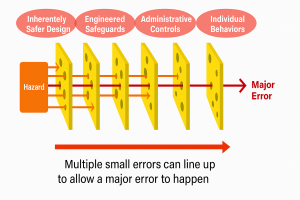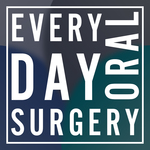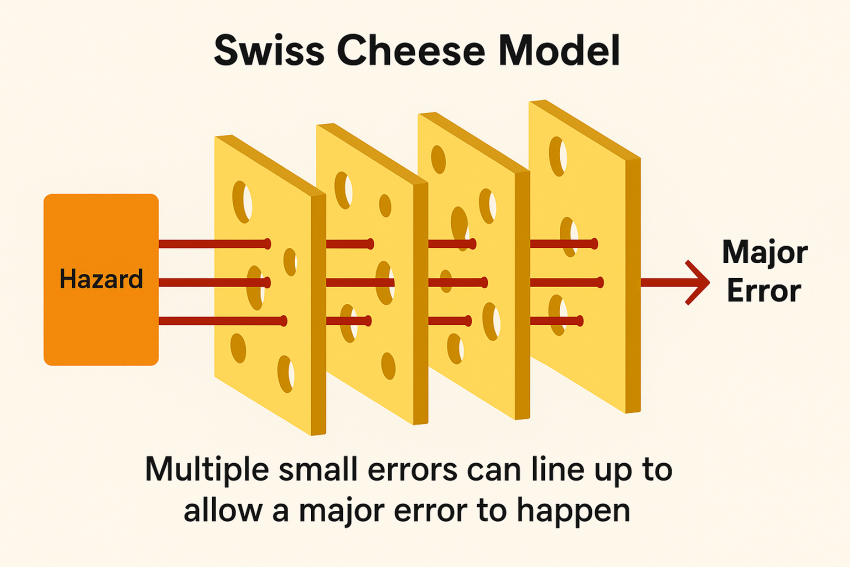Every day, somewhere in the world, a medical mistake happens that causes real, sometimes devastating, consequences for a patient.
On a recent podcast episode, I shared the story of a closed-claim case that perfectly illustrates this.
A young, healthy teenager — a softball player, excited for her upcoming senior prom — was referred to an oral surgeon for extraction of her upper right wisdom tooth. A few days earlier, she’d taken a softball to the face, significantly chipping her front right tooth (#8). Her general dentist made the referral for the wisdom tooth extraction and planned to fix the front tooth in the following days.
Normally, the dentist’s office would send over a written referral form, clearly noting the tooth number both in writing and circled on a diagram. But this time, the patient and her mom were eager to get things done before prom, so they went straight over to the oral surgery office the same day, before the dentist’s staff had time to send the paperwork.
The dental office manager called ahead and told the oral surgeon’s receptionist that the referral was for “extraction of the upper right eight.” The receptionist entered into the electronic system: upper right, #8. One of the staff members then filled out the consent form for the mother to sign, writing in: extraction of upper tooth. The mother signed.
The mother stayed in the lobby, she wasn’t good with blood, while her daughter went back for the procedure. The oral surgeon met the patient, read the note in the system: extraction of upper right, #8). The language there was slightly strange. Why say tooth #8 that way? Anyhow, he found the front tooth looking pretty bad: badly broken. He asked the patient what happened. She confirmed the softball accident. Sedation drugs were administered, and the procedure began.
About 45 minutes later, when the daughter was wheeled out, the mother immediately saw her daughter’s front tooth was missing — not the wisdom tooth. Panic set in.
The surgeon, confused, contacted the referring dentist. That’s when they realized the source of the misunderstanding: the dentist had used orthodontic numbering (where the third molars are “8s”), but the oral surgeon’s office had interpreted it using the universal numbering system, where #8 is the front right central incisor. The oral surgery staff member had inserted a # sign in the fron the 8 when she wrote it down on the computer. This small little symbol created a huge problem.
The dentist was frustrated — he had planned to save the front tooth with a root canal and crown, not extract it. Meanwhile, the patient and her mother were devastated. The surgeon admitted the error and offered to place an implant for free. A lawsuit followed in the which the oral surgeon settled to avoid going to trial. The dentist, initially resistant, eventually settled as well, but only after experiencing a long, stressful legal process.
So, what one thing went wrong here?
Here’s the key point: there was no single error that was solely at fault. This was a classic example of the Swiss cheese model — a concept widely used in surgical error analysis.
The Swiss cheese model says that in complex systems like healthcare, multiple small failures must line up for a major error to get through. Each slice of cheese (each safeguard or protocol) has holes (weaknesses), but normally, the holes don’t line up. When they do, the error punches through all the layers and reaches the patient, as demonstrated in the associated image.

This case had multiple holes:
- The rushed referral without written documentation.
- Miscommunication over tooth numbering systems.
- An unclear consent form.
- The surgeon noting the odd wording but brushing it off.
- Lack of verifying the procedure to be done through multiple ways (like asking the patient to point to or confirm the tooth to be extracted in addition to reading the referral note).
In healthcare, we know mistakes will happen, which is why we build in safeguards — “fail safes” — to catch them before they cause harm. For example, some hospitals require the surgeon to mark the surgical site on the patient’s skin in pre-op. But even that safeguard only works if:
- The surgeon marks the correct site.
- The mark doesn’t get washed off during prep.
- Drapes or tape don’t cover the mark.
Fail safes reduce the chance of error — they don’t eliminate it.
Studies back this up. One showed that simply doing a surgical time-out — a brief pause to review the patient, procedure, and site — drastically reduces adverse events. Another large review found that in major cases of medical errors leading to fatality, not one had a proper time-out performed.
Takeaways
The Swiss cheese model reminds us that major failures are rarely about one big mistake. They’re about multiple little ones, lining up just right.
As oral surgeons, dentists, and really anyone doing work that significantly impacts other people, we should strive to constantly strengthen the layers between error and patient, or person we are affecting. Slow down. Ask questions. Double-check. Use a time-out or some other type of fail safe mechanism. When the holes line up, the consequences are real, and potentially devastating to those we serve, as well as ourselves.
Action Steps
Next time you’re in the operating room, or some other type of work setting, pause — even just for a few seconds — and ask yourself: Have I double-checked everything I can? Have I built in enough layers to catch mistakes?
Talk with your team. Review your protocols. Make sure your safeguards are working, not just existing on paper.
And if you’ve got a story or a lesson from your own practice — a time when a fail safe saved the day (or didn’t) — share it with us in the comments below. Let’s learn from each other and keep improving the system, one layer at a time.
Because the better we understand how errors happen, the better we can prevent them — and the more we can protect the patients who trust us every single day.

